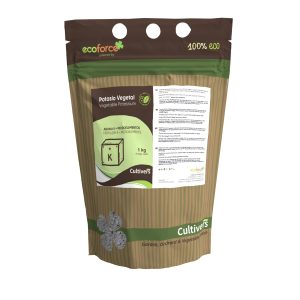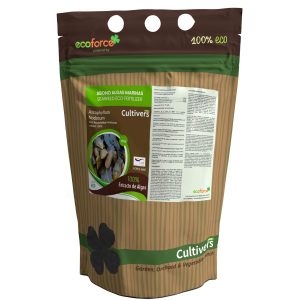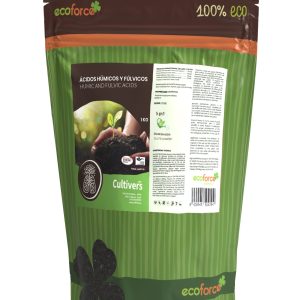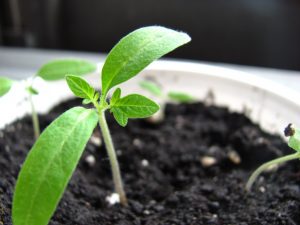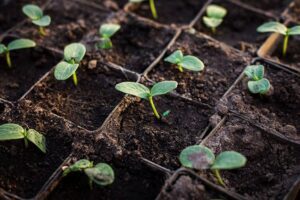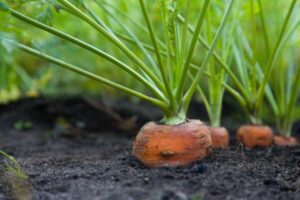In this guide, we are going to show you the fascinating world of kale. From its origin to the care you need to successfully grow it, so get ready to learn all about growing kale!
Kale, scientifically known as Brassica oleracea var. acephala, belongs to the Brassicaceae family. This family includes several cruciferous vegetables and is known for its hardiness and nutritional value. Kale has been cultivated for centuries and has a rich history in world cuisine. In addition, there are countless types and colors of this wonderful plant that in its beginnings was used as food for livestock, after the years the human being realized its great benefits and culinary qualities.
WHEN AND HOW TO PLANT KALE
To begin growing kale, it is crucial to understand the planting process. Kale seeds should be planted in well-drained, nutrient-rich soil. It is important to plant them in a location with direct sunlight to ensure optimal growth.
Kale is best planted in spring or fall when temperatures are cool and favorable for growth. Avoid extremes of heat or cold to ensure successful germination.

IRRIGATION IN THE KALE CULTIVATION GUIDE
Watering is essential for growing kale. This plant requires a constant supply of water to remain healthy. However, overwatering can lead to problems such as powdery mildew and wilt.
It is important to provide regular but moderate watering. Avoid overwatering that can saturate the soil and allow the plant to gradually absorb the moisture it needs to grow strong and hardy.
HOW AND WHEN TO HARVEST KALE
Kale is ready for harvest when the leaves reach a suitable size. It is essential to harvest them at the right time to ensure optimal flavor and texture. When kale leaves reach approximately 20-25 centimeters in height, they are ready to be harvested. Use sharp scissors to cut the leaves at the base of the stem, avoiding damaging the rest of the plant.
One advantage of growing Kale is that it is a plant that will give us food for a long time. We must consider an optimal and if possible definitive place for this wonderful plant. If we do it well it can be with us for many years, giving color to our garden and nourishing our family.

MOST COMMON DISEASES AND PESTS IN KALE CULTIVATION
Although kale is hardy, it can be affected by a variety of insects and pests. Identifying and managing these problems effectively is critical to protecting your crop.
INSECTS IN THE CULTIVATION OF KALE
- Aphids (Aphididae)
- Caterpillars (Lepidoptera)
- Mites (Tetranychidae)
- Whitefly (Aleyrodidae)
- Beetles (Coleoptera)
DISEASES IN THE CULTIVATION OF KALE
- Powdery Mildew: Erysiphe polygoni
- Root rot: Rhizoctonia spp.
- White Rot: Sclerotinia sclerotiorum
- Black Rot: Alternaria brassicicola
PRODUCTS WE RECOMMEND FOR THIS CROP
-
 Vegetable Potassium CorrectorPrice range: 9.90€ through 44.90€
Vegetable Potassium CorrectorPrice range: 9.90€ through 44.90€ -
 Micronized Diatomaceous EarthPrice range: 7.99€ through 29.99€
Micronized Diatomaceous EarthPrice range: 7.99€ through 29.99€ -
 Seaweed Fertilizer Ascophyllum nodosumPrice range: 14.99€ through 85.98€
Seaweed Fertilizer Ascophyllum nodosumPrice range: 14.99€ through 85.98€ -
 Amino Acids LiquidPrice range: 17.90€ through 128.90€
Amino Acids LiquidPrice range: 17.90€ through 128.90€ -
 Solid Humic AcidsPrice range: 13.99€ through 62.00€
Solid Humic AcidsPrice range: 13.99€ through 62.00€ -
 Agro Cane molasses for plantsPrice range: 15.90€ through 69.99€
Agro Cane molasses for plantsPrice range: 15.90€ through 69.99€
